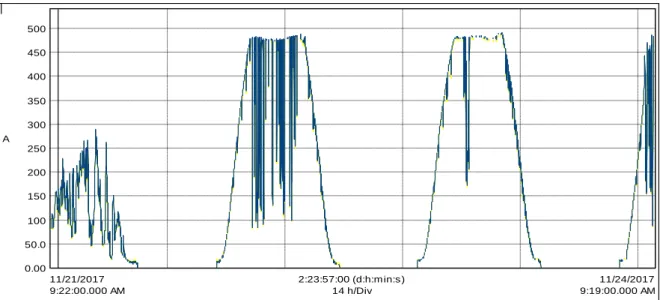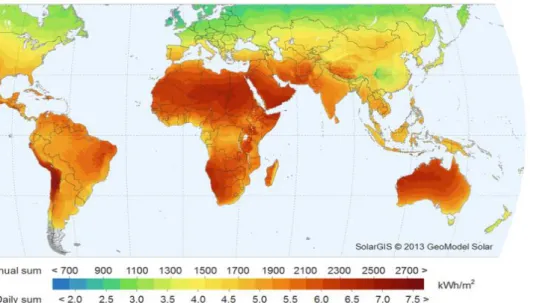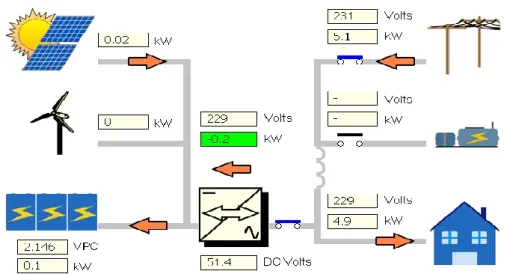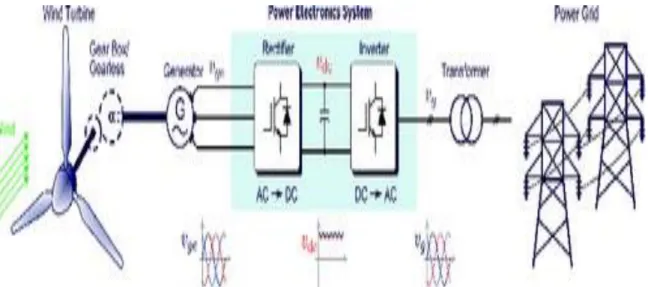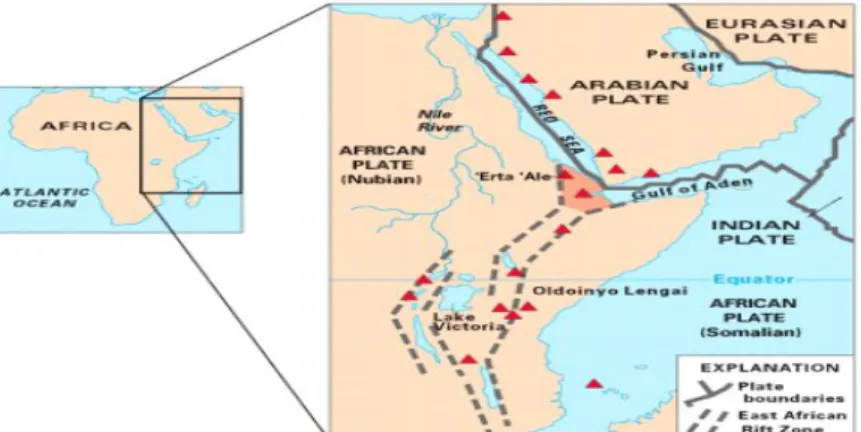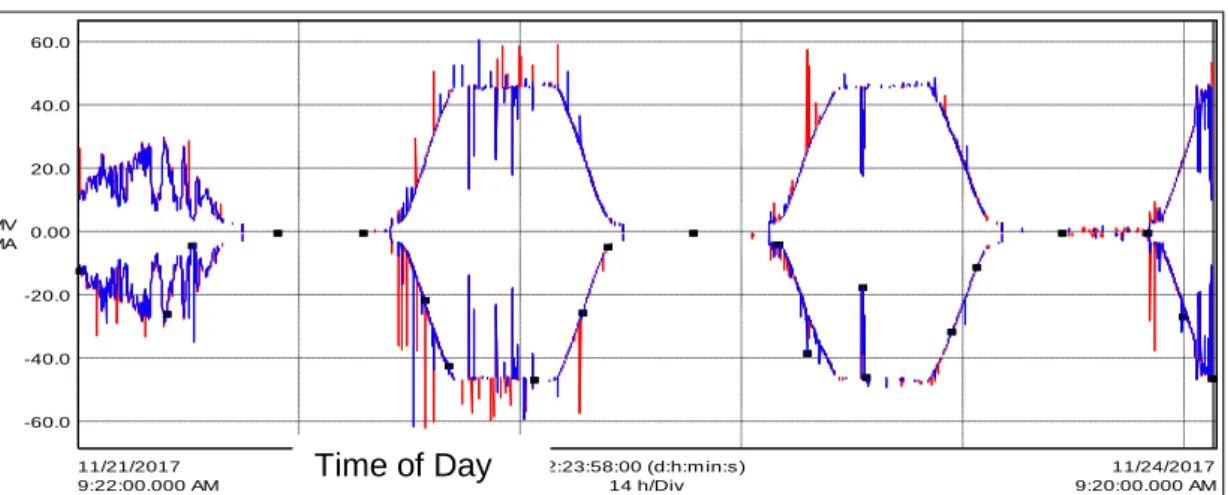Modeling Refers to electrical power system simulation of the designed network to analyze electrical power system data offline or in real time. We define the system stability as the ability of the power system to return to steady state without losing synchronization.
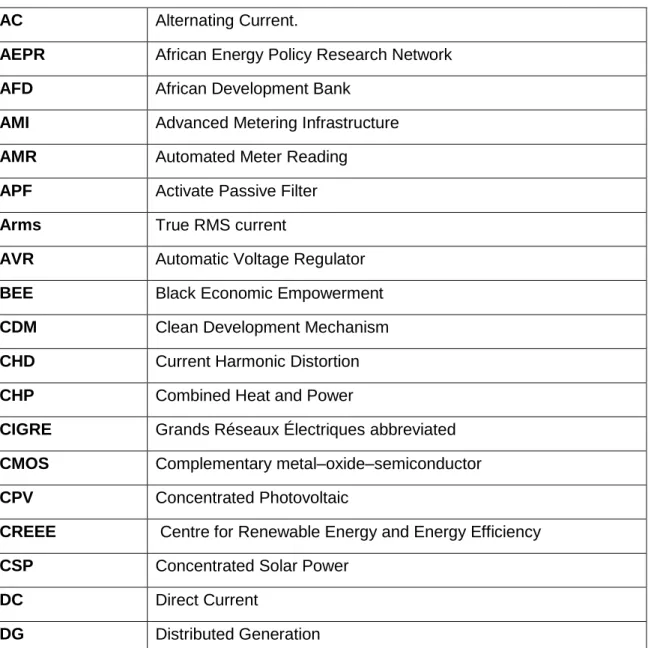
INTRODUCTION
- Introduction
- Awareness of the Problem
- Research Motivation
- Statement of research problem
- Research Objectives
- Hypothesis
- Research design and Methodology
- Research outcome
- Research delimitations
- Thesis organisation
Case Study 1- This case study will look at the impact of renewable generation on the power quality of the grid without a passive filter design model. This study focuses on the integration effect of renewable generation on the power quality of network by modeling harmonics and voltage distortion.
LITERATURE REVIEW OF RENEWABLE GENERATION
Chapter Review
Introduction
These requirements include ensuring high levels of safety, quality, reliability, availability and efficiency of electricity. Africa holds some of the best renewable energy resources in the world in the form of biomass, geothermal, hydropower, solar and wind, which can be used economically to provide energy for the growing population (Wolfrom et al., 2012).
Potential of renewable energy generation in Africa and South Africa
A white paper called “The State of Renewable Energy in South Africa” (2015) by the South African Department of Energy indicates how fortunate and rich the country is in terms of natural resources. According to Figure 2.8, general sources indicate that the greatest potential for wind is in coastal areas, which usually have both onshore and offshore potential.
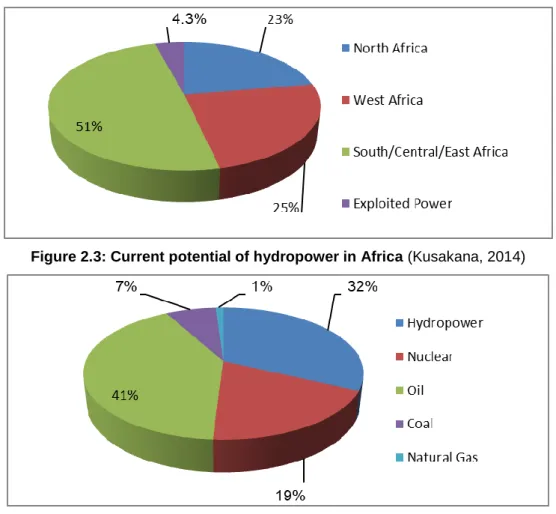
Understanding Renewable generation and Distributed generation concepts
- Background of distributed generation
- Definition of distributed generation
- Renewable generation background
- Definition of renewable generation
Distributed generation is an electrical power source that is directly connected to the distribution network or to the customer site of the meter (Bollen & Hassan, 2011). The definition of distributed generation does not define the rating of the generation source as the.

Types of renewable energy sources
- Photovoltaic (PV) or Solar Power
- Theory of Photovoltaic (PV) electricity generation
- Types of photovoltaic systems
- Wind Power sources
- Hydro Power source
- Biomass renewable source
- Geothermal resources
These photons contain different amounts of energy corresponding to different wavelengths of the solar spectrum. It is the ratio of the ratio of the peripheral speed of the turbine blade tips to the wind speed (Nikolaev et al., 1994).
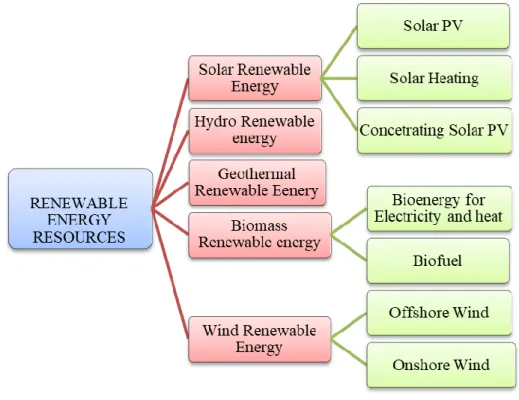
INTEGRATION CHALLENGES OF RENEWABLE GENERATION
Chapter review
Awareness of the regional bodies
REIPPPP in South Africa, together with other organizations such as the South African National Energy Development Institute (SANEDI), is accelerating the development of sustainable generation in South Africa. This chapter discusses in more detail the economic and technical challenges facing the implementation of renewable generation in South Africa and Africa as a whole. It aims to answer questions such as what is holding back renewable development technology in Africa and South Africa.
The challenges associated with renewable generation development
- Natural challenges
- Financial Challenges
- Policy and regulation challenge
- Social Challenges
- Lack of Experts and Experience
- Threat to Profit
According to Amigun et al. (2011), one of the social barriers to renewable energy development is the potential for such projects to be rejected by local authorities and communities. The gap according to Masebinu et al., (2016) is mainly attributed to the lack of information, education and awareness. Since 2011, South Africa has experienced strong growth in renewable energy investments thanks to the success of its REIPPPP (Eberhard et al., 2014).
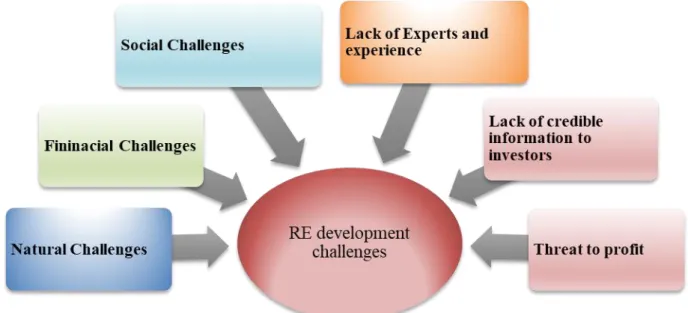
Technical challenges associated with integration of renewable generation
- Power Quality Concerns
- Intermittency of generation
- Change in standard load patterns
- Reverse Power Flow and Voltage Rise
- Security and Risk
58 unpredictability that creates a number of challenges for the distribution system (Hung et al., 2016; Huda & Zivanovic, 2017). Research suggests that due to the distinct characteristics of renewable generation technologies or small-scale integrated generation controllers involved in system voltage stability can be significantly affected by system penetration integration (Hung et al., 2016 ). Similar findings have been found showing the impact of high solar and wind penetration on the frequency stability of the South Australian power system (Yan et al., 2015).
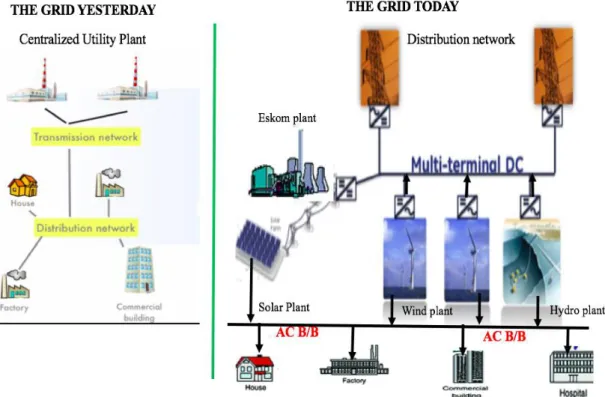
Opportunities for increased integration of renewable generation
- Tax incentive
- Government renewables incentives
- Sensitizing Policy Makers in Africa
- Baseload myth
- Amendment of policy and energy regulation
- Market Design
However, renewable energy projects and initial setup costs are very expensive (Aliyu et al., 2017). As a result, the government has introduced many tax incentives in the renewable energy sector (Cuamba et al., 2013). According to Romero-Cadaval et al., (2015), the potential for renewable energy can be realized at a reasonable cost.
EFFECT OF RENEWABLE GENERATION TECHNOLOGIES ON POWER
Chapter Review
Introduction
Brief review of the impact of renewable generation technologies
Brief review and definition of renewable generation
76 Renewable generation or distributed generation can serve a single structure, such as a home or business, or it can be part of a microgrid (a smaller grid that is also tied into the larger electricity supply system), such as at a major industrial plant, hospital facility or large public and university facilities. The definition proposed in Chapter 2 looks at an approach to a general definition of distributed generation or renewable generation. The general definitions for distributed generation proposed here are: Distributed generation is an electrical power source connected directly to the distribution grid or at the meter's customer site.
Overview of Power System grid
Clean renewable generation technologies or embedded generation or distributed generations are often no longer connected to the transmission system, but to the distribution system. In South Africa, IPPs are currently part of the distribution system that generates electricity for distribution at different generation sites and is integrated with the electricity grid to increase generation. The diverse role of integration of renewable generation plays a major role in T&D systems of the electricity energy market economy.

Power Quality
- Reasons for increased interest and development of Power quality
- Definition and background of Power Quality
- Grid code analysis and definition
- Power quality concerns with renewable generation integration
- Power Quality Mitigation Techniques
One of the biggest power quality problems is the presence of harmonics in the power system. However, such interfaces can be used to mitigate some existing power quality disturbances (Bollen & Gu, 2006). The quality of electricity in the grid depends on the interaction between the grid and renewable energy generation technologies.
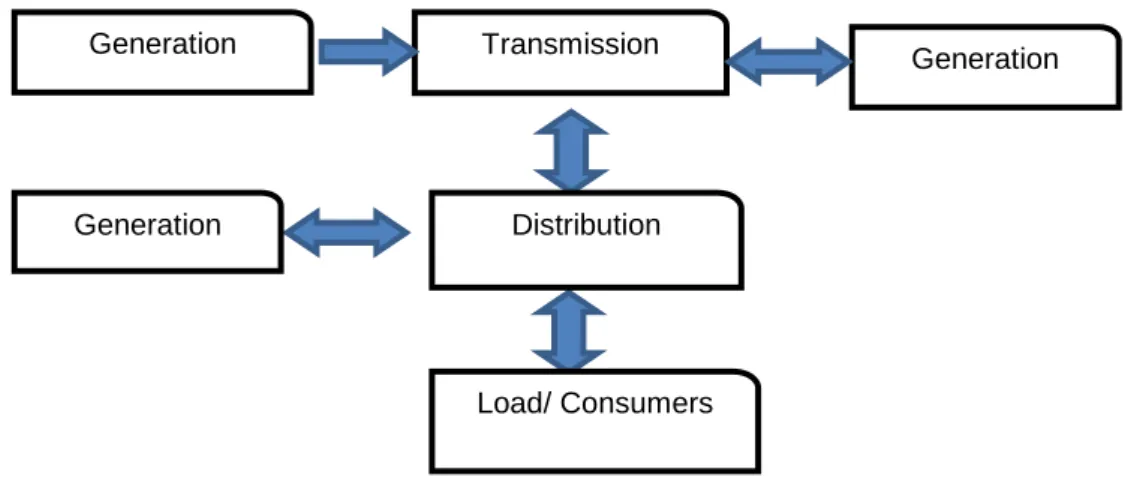
HARMONIC MITIGATION TECHNIQUES AND SYSTEM STABILITY
Chapter Review
Introduction
Harmonics Definition
103 section of a periodic wave that has a frequency that is an integral multiple of the fundamental frequency (Enslin & Heske, 2004). A periodic distorted wave of any possible shape can be generated using distinct harmonic frequencies of different amplitudes. Any periodic distorted wave can be decomposed into a fundamental wave and a set of harmonic waves (Enslin & Heske, 2004).
Power system stability
Fourier analysis is a mathematical technique for finding the amplitudes, frequencies, and phases of the components of a given waveform. The equations below show the discrete Fourier sum for f(t) before τ approaches infinity (Silas & Madubuike, 2016). figure 5.1 is the extension of graphs, showing the influence of non-linear loads in the power grid. 104 et al.2017). The behavior of the system after this disturbance depends on the extremity of the disturbance on the system.
Harmonic generation in renewable systems
PCC is usually taken as the point in the power system closest to the user where the system owner or operator could provide services to another user (Tareen et al., 2017). In general, the PCC is a point in a public electricity supply system, electrically closest to a given load, to which other loads are or can be connected and located upstream of the considered installation (Pinto et al. , 2016). Our concern is mainly the old harmonics, which are present in an AC power system network and contribute to total harmonic distortion (THD) (Pinto et al., 2016).
Understanding power system harmonics
An example of voltage and current waveforms for a linear load is shown in Figure 5.4 below. Although the load doing the work can be very effective, the total work required to do work done by the nonlinear load is much greater than the linear load (Subhani et al., 2017). These non-sinusoidal currents contain harmonic currents that interact with the impedance of the power distribution system to create voltage distortion that can affect both the distribution system equipment and the loads connected to it (Abdel-Salam et al., 2011).
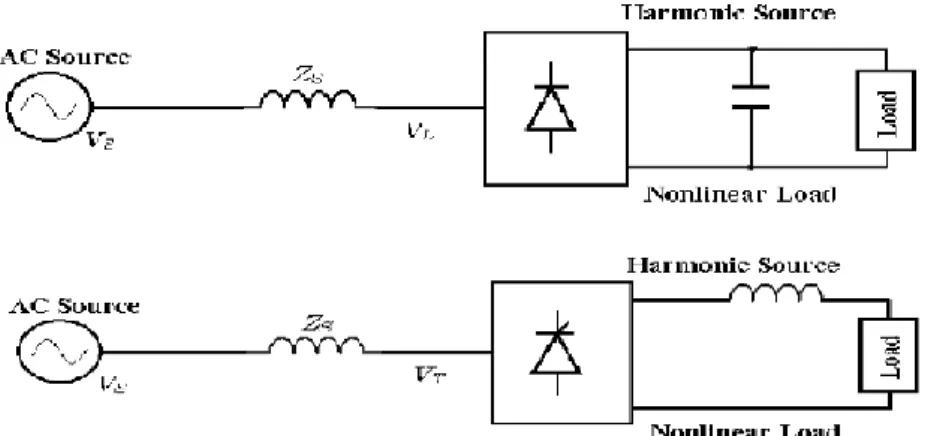
Harmonic Source
- Magnetizing currents
- Power conversion devices
Converter 109 breaks or chops the AC current waveforms allowing current to flow during part of the cycle. We see that the AC harmonic currents generated by a six-pulse converter include all the odd harmonics except the triple. For the ideal case, the harmonic current magnitudes of the converter decrease according to the 1/h rule (Abdel-Salam et al., 2011).
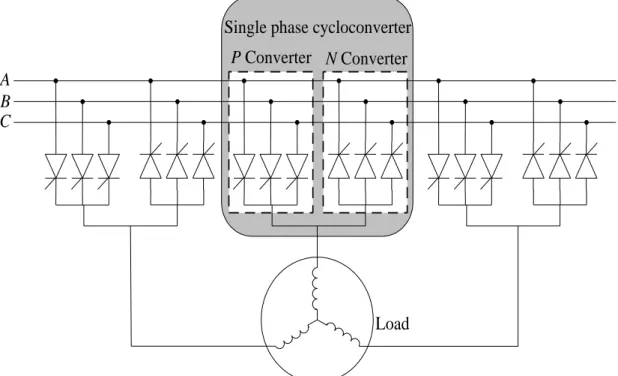
Effect of harmonics in the system
Harmonic standards
- IEEE 519-1992
- IEC 61000-3-2 (1995-03), IEC 61000-3-6, IEC 61000-4-7, & IEC 61000-4-30113
Harmonics in the power distribution system combine with the fundamental current (60 Hz) to create distortion. The main question is whether this will require new ways of considering power quality in design (Bollen et al., 2015). The positive and negative impact of applications of new smart distribution technologies such as Volt & VAR control, as well as supplier reconfiguration on power quality (voltage imbalance and harmonic current) in the distribution system (Bollen et al., 2015).
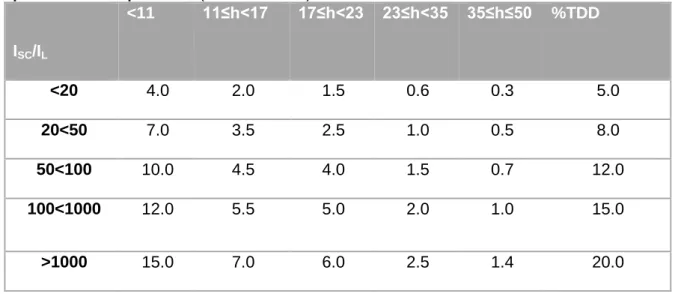
Harmonic Mitigation Techniques
- Passive Power Filter
- Series Passive Filter
- Passive Shunt Filter
- Hybrid filter
Since they are connected in shunt, they are designed to carry only harmonic current (Sher et al., 2013). As shown in Figure 5.11 and below, they can be divided into tuned (single, double, triple and multi-tuned) and damped (first, second, third order and C-type) filters (Sher et al., 2013) . However, controlling the load power factor places a higher voltage across the filter capacitor (Sahithullah et al., 2016).
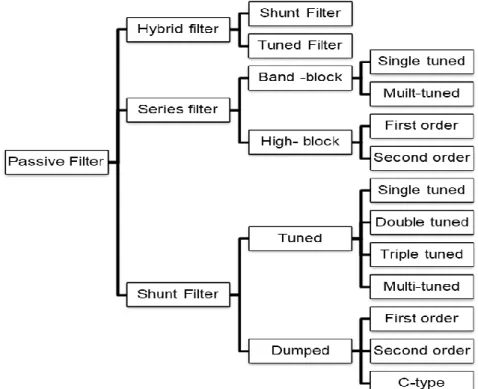
Harmonic Analysis
- Total Harmonic Distortion
- Voltage Harmonic distortion (VHD)
- Current Harmonics distortion (CHD)
It can also be defined as the ratio of the square root of the sum of the square of the Vrms value for the harmonic component and the Vrms value of the fundamental component (Xu & Liu., 2000). THD is expressed as a percentage of fundamental. The higher the percentage, the higher the harmonic content or percentage. The term RMS distortion is used to indicate the rms value of the harmonic current, with the fundamental value excluded from the summation.
MODELLING AND ANALYSIS OF HARMONIC STABILITY AND VOLTAGE
Chapter Review
Network modelling and design
In this section, a grid planning model is presented to analyze the renewable energy (RG) generation technology and its impact on the power quality of the grid or the impact of the mix of energy sources on the grid's power system. A technique for evaluating this impact of renewable generation is achieved by simulating the network in Figure 6.4 under two case study conditions. The connection point of the filter and harmonic source was chosen on the harmonic load bus (see Figure 6.4 below) because it was found that although this was not a point of common coupling (PCC) of the low voltage system, it was effective in mitigating harmonic voltage distortion and interference to improve stability and achieve results.
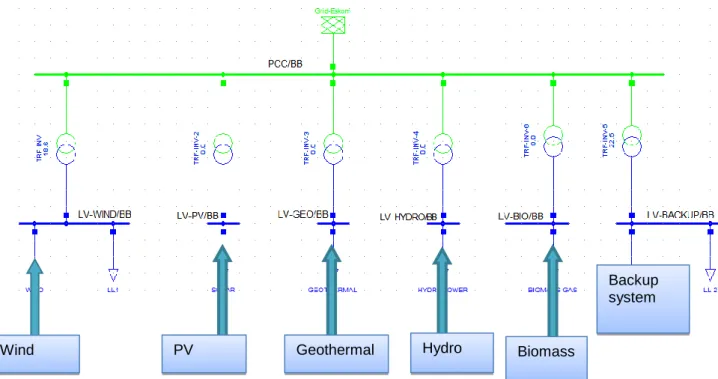
Simulation design and harmonic analysis using DIgSILENT
- Filter design
- Network Parameters
- Simulation Results
- Final Analysis of Simulation Results
The impedance of the filter at the tuned harmonic frequency is purely resistive due to the equal capacitive and inductive reactance. The results in Tables 6.6-6.8 and Figure 6.4 show the voltage load flow results before the filter is implemented on the PCC, and Tables 6.9-6.11 and Figure 6.5 show the simulation results after the filter is implemented on the PCC. The performance of the filter implementation on the scan impedance is shown in Figure 6.9 below.
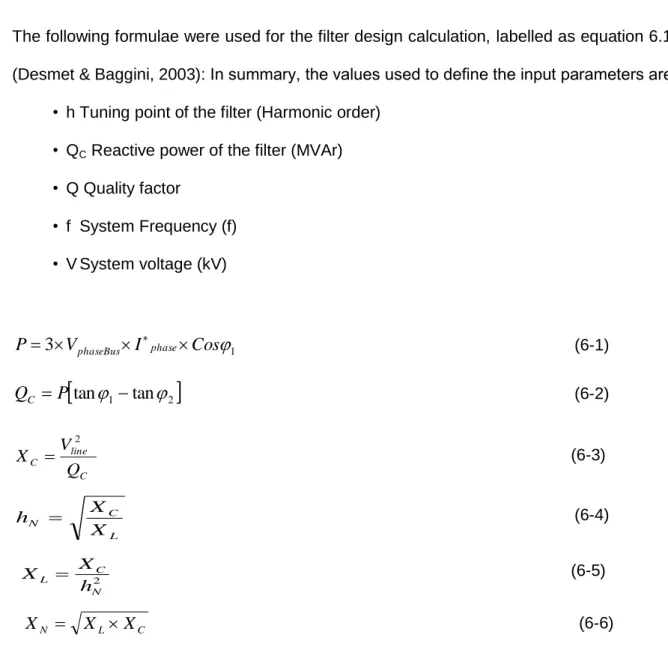
CONCLUSION AND RECOMMENDATION
Chapter Review
Developing a 2015 renewable energy supply outlook for the Republic of South Africa (Doctoral dissertation, University of Stellenbosch). Renewable Energy Sources and Climate Change Mitigation: Special Report of the Intergovernmental Panel on Climate Change. South Africa's performance in renewable energy and its position relative to OECD countries and the rest of Africa.
